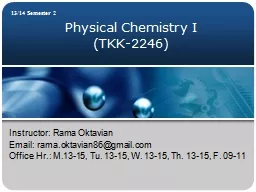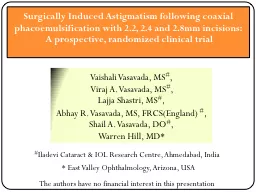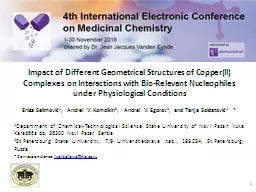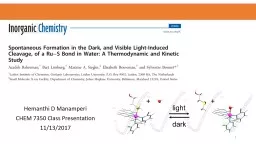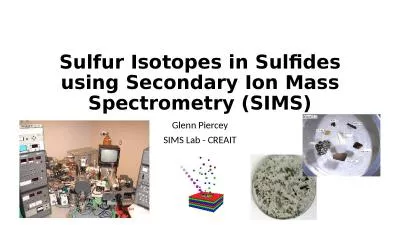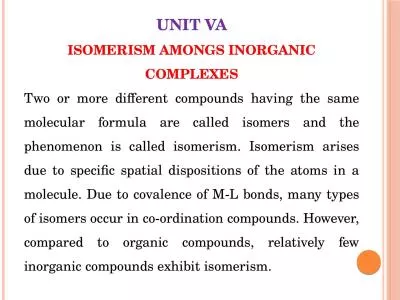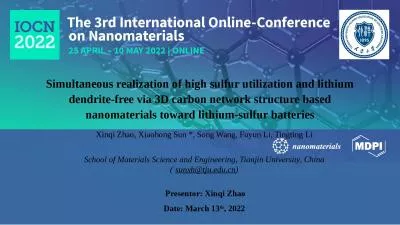PPT-Light-Induced Sulfur to Oxygen Isomerization of Ruthenium Sulfoxide Complexes
Author : ellena-manuel | Published Date : 2019-11-05
LightInduced Sulfur to Oxygen Isomerization of Ruthenium Sulfoxide Complexes Jackson Majher Photoswitchable molecules molecules which change optically and electronically
Presentation Embed Code
Download Presentation
Download Presentation The PPT/PDF document "Light-Induced Sulfur to Oxygen Isomeriza..." is the property of its rightful owner. Permission is granted to download and print the materials on this website for personal, non-commercial use only, and to display it on your personal computer provided you do not modify the materials and that you retain all copyright notices contained in the materials. By downloading content from our website, you accept the terms of this agreement.
Light-Induced Sulfur to Oxygen Isomerization of Ruthenium Sulfoxide Complexes: Transcript
Download Rules Of Document
"Light-Induced Sulfur to Oxygen Isomerization of Ruthenium Sulfoxide Complexes"The content belongs to its owner. You may download and print it for personal use, without modification, and keep all copyright notices. By downloading, you agree to these terms.
Related Documents




